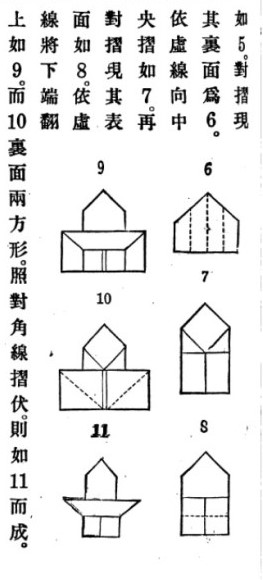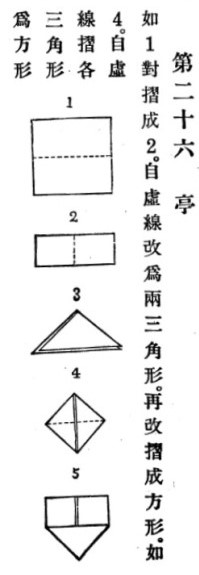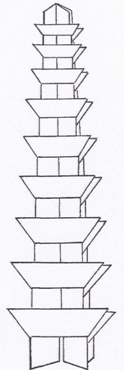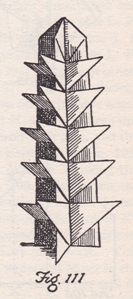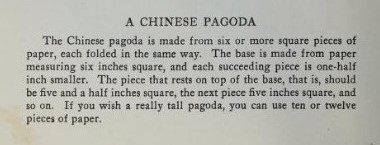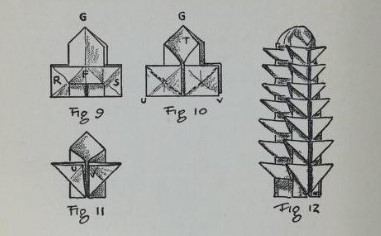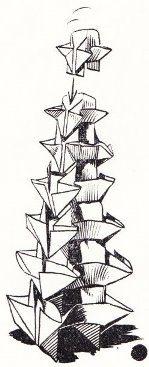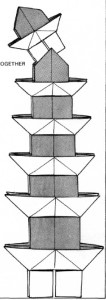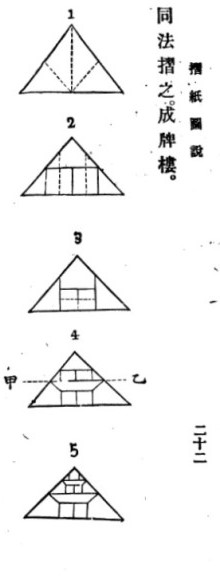| The Public Paperfolding History Project
Last updated 21/4/2025 x |
|||||||
| The Pavilion / The Pagoda / The Archway | |||||||
| This
page is being used to collect information about the
history of the connected designs of the Pavilion / the
Pagoda and the Archway. Please contact me if you know any
of this information is incorrect or if you have any other
information that should be added. Thank you. The Pavilion is the basic 3D form of the design. The Pagoda is made by stacking several Pavilions on top of each other. The Archway is made from a pictorial version of the Pavilion. The Pagoda and the Archway are relatively early examples of multiple piece / modular design. ********** The Pavilion / The Pagoda In China (and in publications by Chinese authors) 1914 Diagrams for the 'Pavilion' appear in 'Zhe zhi tu shuo' (Illustrated Paperfolding), compiled by Gui Shaolie, which was published by the Commercial Press in Shanghai in Ming guo 3 (1914). There is no indication in the text that the author is aware that several of these Pavilions can be stacked to produce a Pagoda.
********** 1948 A multi-piece design in the form of a series of stacked, and successively smaller, Pavilions appears as the 'Chinese Pagoda Bookmark' in 'The Art of Chinese Paperfolding' by Maying Soong, first published by Harcourt Brace in New York in 1948. It is made in 9 pieces from squares of diminishing sizes, each square being a quarter inch smaller than the preceeding square.
********** In Europe and the Americas 1928 As far as I know the first appearance of the Pagoda in the historical record is in 'Fun with Paper Folding' by William D Murray and Francis J Rigney first published by the Fleming H Revell Company, New York in 1928. It is made from 5 pieces folded from squares of diminishing sizes, each square being a half inch smaller than the preceeding square.
********** 1939 As 'A Chinese Pagoda' in 'Fun with Paper' by Joseph Leeming, which was published by Spencer Press Inc in Chicago in 1939.
********** 1956 As 'The Pagoda' in 'Paper Magic' by Robert Harbin, which was published by Oldbourne in London in 1956. The text says, 'Origin: Japanese.'
********** 1968 As 'The Pagoda' in 'Your Book of Paperfolding' by Vanessa and Eric de Maré, which was published by Faber and Faber in London in 1968, where it was is to be a traditional Chinese design.
********** 1969 The 1969 Rupert Annual contains folding instructions showing 'How Rupert Makes a Paper Pagoda'. It is said to be a 'traditional Japanese paper-fold'.
********** 1970 As 'Pagoda' in 'Origami Compendium No 1' by Robert harbin, which was published c1970, where it is misattributed to Maying Soong, China
********** The Archway 1914 The 'Archway', of the kind that forms a ceremonial gateway, appears in 'Zhe zhi tu shuo' (Illustrated Paperfolding), compiled by Gui Shaolie, which was published by the Commercial Press in Shanghai in Ming guo 3 (1914). The final picture in these instructions shows a second pavilion, folded from quarter size paper, added to the first to produce the finished 'Archway' design.
********** |
|||||||
